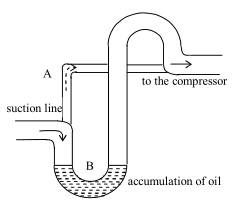In one type of large bore MC engines with high cylinder numbers, we have experienced longitudinal vi...
vibrations of exhaust receiver of a magnitude that caused local overstressing around the fixed supports.
Measurements revealed that the vibrations were caused by gas pulsation inside the receiver at a frequency,
which, at certain engine speeds, coincided with the natural frequency of the mechanical vibrations of the
receiver. The problems were solved by redesigning the receiver and its supports, so as to change the natural
frequency. The fixed support for the exhaust receiver was modified from our single spring plate type to a
double spring plate type. The double spring plate type reduces the local deformation of the receiver and
because of the greater rigidity, also the natural frequency of the support is increased.
参考解析:
1. The MC engine_____.
A. is a new type of diesel engine discovered and used on board not long ago
B. is a new type of diesel engine designed on the basis of MAN and B&W engine
C. came to use before the MAN and B&W engine
D. has no advantages over the MAN and B&W engine
2. The vibration caused by_____.
A. the natural frequency of the fixed support
B. the different engine speeds
C. the gas pulsating within the receiver
D. the gas exhausting inside the receiver
3. The aim at redesigning the receiver and its supports is to_____.
A. keep the frequency down
B. convert the natural frequency
C. reduce the mechanical vibration
D. exhaust much gas
4. The fixed support of the receiver of double spring plate type is_____.
A. modified from that of the receiver of single spring plate type
B. to reduce the local deformation of the receiver
C. to produce less natural frequency of the support
D. both A and B


 百度扫一扫练题
百度扫一扫练题
 关注千题库公众号
关注千题库公众号








